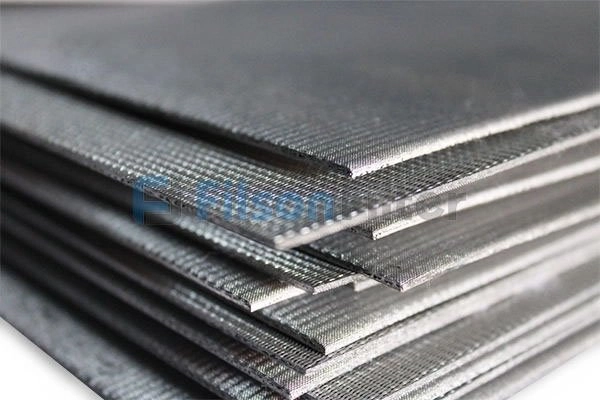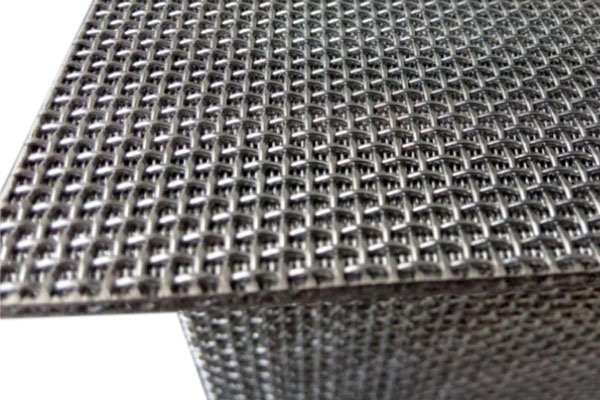
Filson Sintered Stainless Steel Sheet
- Resistant to high temperature and pressure for high flow rate
- Superior mechanical strength with 100% stainless steel structure
- Excellent air permeability with uniform pore distribution
- Stable filtration precision even through several cleanings
- Backwash support with low manual maintenance and cost
- Specifications
- Filson Sintered Stainless Steel Sheet
- FAQ Guide
Filson has rich experience of manufacturing sintered stainless steel sheet in various sizes while maximum size of 1200×1500 mm commonly. Certainly, bespoke service is our speciality, just send us your drawing or application demands, we will give you a satisfied reply.
- Raw material: SS 304/316L or other series
- Filtration accuracy: 3-100 micron
- Design pressure: 3 Mpa
- Working temp: up to 600℃
- Porosity: 30%-45%
- Shape: square
- Thickness: Min. 0.5mm
- Maximum size: 1200×1500 mm
Note: Listed above are standard data, for reference only.
Your Dependable Sintered Stainless Steel Sheet Supply Cooperator in China
Filson sintered stainless steel sheet is generally manufactured in SS 304 or SS 316L material through a sintering process, or other series of stainless steels are also allowed upon your request. It features high temperature resistance which can work normally under 600℃ condition, while has good chemical compatibility in most acid-based liquids.
If you require higher accuracy with higher mechanical strength, you may choose Filson sintered stainless steel sheet as a alternative of stainless steel woven mesh sheet. It can be designed down to 3μm filtration rating to provide optimal filtration effect.
Interested in Filson sintered stainless steel sheet? Please click here for contact.
Sintered Stainless Steel Sheet: The Ultimate FAQ Guide
This guide covers everything you need to know about sintered stainless steel sheets.
Whether you need the basic or advanced information, you will find everything here.
Keep reading to be an expert in sintered stainless steel sheet.
- What is Sintering Process?
- How do you make Sintered Stainless Steel Sheet?
- What are the Benefits of Sintered Stainless Steel Sheet?
- Are there Disadvantages of using Sintered Stainless Steel Sheet?
- Why use Sintered Stainless Steel Filters?
- What is the difference between Sintering and Melting?
- What are the Application of Sintered Stainless Steel Sheet?
- What is the Best Metal Grade for Sintered Stainless Steel Sheet?
- Can you Machine Sintered Stainless Steel Sheet?
- How do you Machine Sintered Stainless Steel Sheet?
- What Products can you make from Sintered Stainless Steel Sheet?
- Can you Spot Weld Sintered Stainless Steel Sheet?
- What are the Popular Sizes of Sintered Stainless Steel Sheet?
- What is the Largest Hole you can Punch on Sintered Stainless Steel Sheet?
- How do you Specify Porous Sintered Stainless Steel Sheet?
- What are the Important Design Advantages of Porous Sintered Stainless Steel Parts?
- What is Axial Compaction in Sintered Stainless Steel Manufacturing Process?
- How do you Manufacture Sintered Stainless Steel through Gravity Technique?
- How does Powder Rolling and Sintering Compare to Isostatic Compaction and Sintering?
- How do you use Spray Technique to Manufacture Sintered Stainless Steel Sheet?
- How does Metal Coating and Sintering compare to Metal Injection Molding and Sintering in Sintering Process?
- What are the Properties of Sintered Stainless Steel Sheet Type 316L?
- What are the Performance Characteristics of Porous Sintered Stainless Steel Sheets?
- What are the Mechanical Properties of Porous Sintered Stainless Steel Sheet?
- How do you Test Quality of Sintered Stainless Steel Sheet?
- Are there Special Surface Finish Options for Sintered Stainless Steel Sheet?
What is Sintering Process?
It is the process through which particles get fused into a single mass of solid by adopting a mix of heat and pressure without melting the materials directly.
Some of the known particles which get sintered together are ceramic, metal, plastic along with some other materials.
This process is quite essential while producing discrete particles which come as a unit.
You can use it to make sintered metal filters.

Sintered metal filters
Heating at high temperature of compacted contacts gets to fuse together the constituent materials as the materials end up getting wet in one.
The temperature of the furnace, that of the atmosphere and the contacts are all in the heat and are the main elements of the process.
How do you make Sintered Stainless Steel Sheet?
Making of sintering sintered stainless steel is done through powder sintering.
This method is adopted in increasing the structural integrity as well as strength of steel metal powders.
The process of sintering of stainless steel goes through the fusion of the metal powders as well as other materials like alloying elements.
It adopts heat treatments in a single, furnace that is elongated and which have varied zones of temperature.
The temperature of sintering is mostly below the point of melting of the materials.
There are three stages in the sintering process of stainless steel sheets:
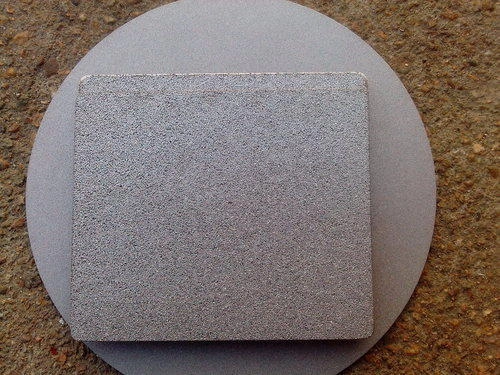
Sintered stainless steel sheet
First Stage:
The materials get heated within a furnace at some rate of temperature which starts off the creation of structures that are crystalline, martensitic in nature.
Full compaction does not take place since the temperature of sintering is not quite high so as to have the particles melt.
Consolidation of the materials may end up being accomplished through a variety of ways.
These include the use of tools for pressing the materials as one or using lasers in 3D form which are able to melt the powders in part.
The particles may also get joined through cold welds so as to give the powder robust worthy strength in the whole process.
Intermediate Stage:
The particle density gets to increase and they end up merging.
Some of the two relevant ways to realize this are permanent sintering of liquid phase and transient liquid one.
In case the sintering powder solid consists of iron, then the sintering process through liquid phase gets adopted.
In the stage, copper powder gets mixed with iron powder.
At the known temperature of sintering, copper gets to melt and then mixes with the iron so as to harden the materials into one.
Within the permanent phase process, liquid materials like carbides that are cemented get added.
Then flow into some open pores as well as cracks so as to bind the materials even more.
Final Stage:
Through the powder sintering stage, the original powder for sintering have ended up becoming solid.
This is the final process of the liquid phase which is permanent for sintering.
Binder and liquid additive get to flow into some open cracks or even pores so as to bind in a successful manner the packed mass.
What are the Benefits of Sintered Stainless Steel Sheet?
The benefits include having a lubricant within the pores (self-lubrication).
Besides, the materials are adaptable under their operating conditions due to the pore spaces being deformed.
There exists a continuous progress when porous sintered materials are produced for a variety of technology branches.
Are there Disadvantages of using Sintered Stainless Steel Sheet?
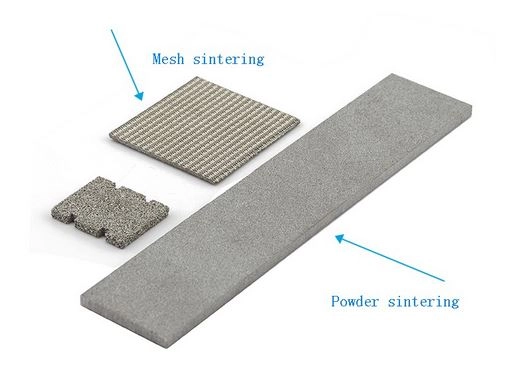
Sintered stainless steel sheet
In an economic sense, it would be beneficial to use sintered stainless steel when there is large scale production being contemplated.
This is due to the need to manufacture mold or die for coming up with sintered materials.
The other factor that should be taken into consideration with sintered stainless steel concerns the high cost used in purchasing the startling powders.
Nevertheless, this limitation may be removed as powders get produced in high quantity and there is improvement in the methods of production.
The third factor relates to the need that the startling powders have high purity.
This is critical for iron powders as well as their alloys.
It is because their impurities within the startling materials may not be removed wholly from the materials that have been sintered after they have been produced.
This disadvantage is slowly being eliminated through large-scale production of actual powder after there is atomization of iron in molten form.
There are known measures used in the preservation as well as storage of finished parts.
This also applies to intermediate products in the case of porous sintered stainless steel sheets.
Why use Sintered Stainless Steel Filters?
The first major application of sintering is for joining particles of metals into one.
In most cases, sintering is adopted in metals that have high points of melting as it does not rely on reaching the temperatures of melting.
Certain devices for 3D printing work through the sintering metals into a single layer at each time to come up with custom metal forms.
The act of sintering a metal to be used in 3D printing may help in saving energy.
That is, in comparison to having the metal melted.
It also permits for more control as well as consistency since the material does not get to be liquefied in whole.
Nevertheless, this may leave minute gaps than the whole liquefaction that happens when they are melted.
Sintering may also be adopted in reducing the porosity of the surface object.
This may enhance the properties of the sintered stainless steel filters.
What is the difference between Sintering and Melting?
Much as the two methods are adopted in combining materials.
They are different as far as the temperature of sintering and liquefaction is concerned.
A major difference of the two is the liquefaction of the material.
In most cases, a material that is melting gets to be brought to some temperature that will be responsible for turning it from solid to liquid.
In sintering, the material gets imbued with the right energy so as to accomplish the transition between the various states of energy.
A material which is being sintered gets to be compacted by adopting a range of pressure and heat without really crossing the threshold of energy needed in turning it into a liquid.
The reason it is a significant difference is that it is significant as sintering may take place at low temperatures when the conditions are observed.
For instance, when snow gets compacted into some ball by a child, it would make an example of sintering based on pressure.
In a basic sense, sintering may be an operation that meets temperature of pressure while melting is mostly through temperature.
What are the Application of Sintered Stainless Steel Sheet?
The following are the primary applications of sintered stainless steel sheets:
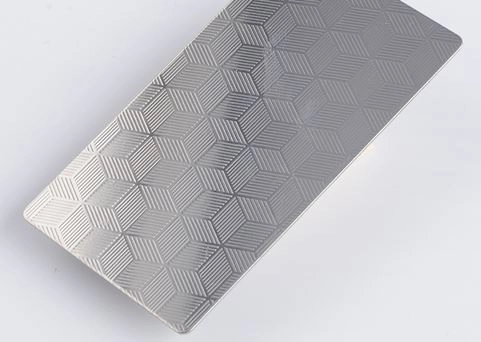
Embossed sintered stainless steel sheet
- They are used as filters in the case of separating liquids from solids as well as gases; Examples would be filters for retention of catalysts, oil burner fuels, processing of polymers, instruments, pressure regulators, delivery systems of medical drugs, cryogenic fluids.
- Metering of fluid flow and control of pressure; examples would be restrictors for flow, leaks that are calibrated, pneumatic delays.
- Reservoirs for liquid storage; examples would be bearings for self-lubricating, devices for cooling, wicks, elements for heat exchange.
- Flame as well as S Arrestors for sparks used in precautionary handling of gases that are flammable. Examples would be welding or electrical enclosures.
- Attenuation and Sound removal: Examples would be silencers and pneumatic mufflers, microphone attenuators.
- Sparging and gas distribution: examples would be vacuum plates, air bearings, ozone injection and stripping of oxygen.
- Media retention: examples would be permeable barriers used as desiccants, purifiers and getters.
What is the Best Metal Grade for Sintered Stainless Steel Sheet?
The best metal grades are 304 and 316 in the case of applications which are subjected to aggressive corrosive conditions.
303 grade is suitable in case you’re focusing on ease of machining.
Can you Machine Sintered Stainless Steel Sheet?
Yes. Porous metal parts do have their best use when they are sintered.
How do you Machine Sintered Stainless Steel Sheet?
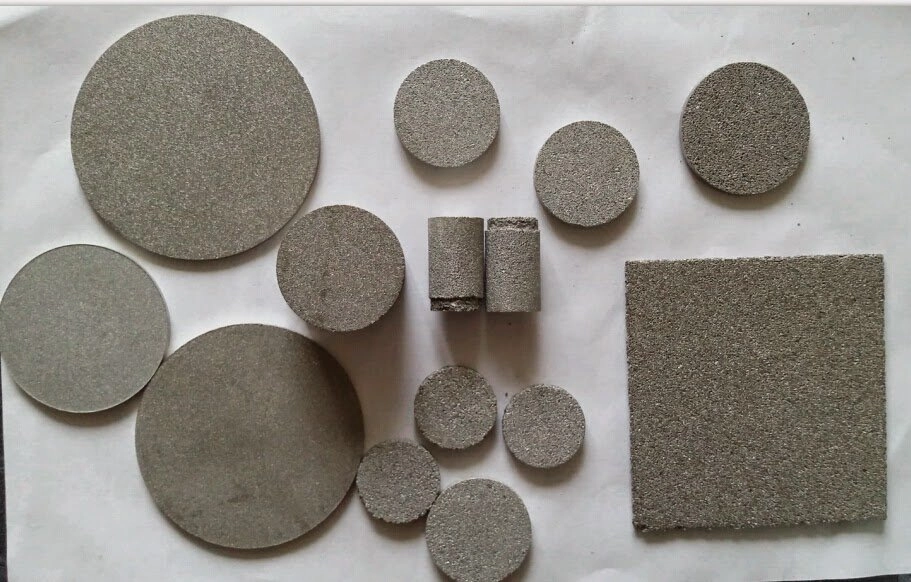
Cut Stainless steel parts
The alternative methods for conventional machining entails Electrical Discharge Machining (EDM).
This is done in order to come up with special shapes.
Much as conventional machining as well as laser cutting normally need acid etching for removal of the surface.
It is smeared as well as reactivate the pores, having the right EDM processing may end up making the holes remain open so that just a serious washing is needed.
Processing of EDM is mostly kept for components that are a prototype.
This is because of higher processing as well as the needed costs for cleaning.
Cutting with the help of laser as well as machining may end up being inexpensive.
That is when you are producing large volumes and in the event that surface porosity would not need reactivation.
The act of machining the area not working is mostly accomplished without having a what to cool it.
Further, the parts which are to be passed through machine ought to be cared for with hands that are free from oil.
It is important to add a section that has been machined through sinter-bonding, adhesive bonding and also welding.
What Products can you make from Sintered Stainless Steel Sheet?
Some of the products from these kinds of steel are:
- Sintered stainless steel wire mesh
- Sintered metal wire cloth filters
- Sintered metal powder porous 3162
- Perforated filter elements
- 316L stainless steel fibers, among many others.
Can you Spot Weld Sintered Stainless Steel Sheet?
Yes.
The welding of sintered steel is varied depending on the kind of thickness as well as the material finish or the kind of use of the finished product.
Much as there are many methods for welding of stainless steel, there exist three most commonly used types that welders use in the United States.
The stainless steel welding methods are TIG welding, MIG welding and resistance welding (Spot welding).
Spot welding or resistance welding is one of the most economical ones.
In most cases the equipment for the same is very versatile and this means that it may be used on a large scale and on a small scale.
The method adopts electrical current for heating frayed edges of metal and then they are sealed together.
Spot welding welding is very productive on the type of metal that has a low point of melting since it may be tailored so as to prevent distortion of the same.
What are the Popular Sizes of Sintered Stainless Steel Sheet?
The popular sizes are 314 and 304 types.
What is the Largest Hole you can Punch on Sintered Stainless Steel Sheet?
The rule of thumb which specifies that the diameter of the hole to be punched should be no smaller than the sheet gauge which is being punched.
As the tensile strength of the material increases, it is recommended that the diameter of the punch ranges from the thickness of the gauge to 1.5 times.
That is, the thickness of the gauge of the sheet metal you would like to punch.
How do you Specify Porous Sintered Stainless Steel Sheet?
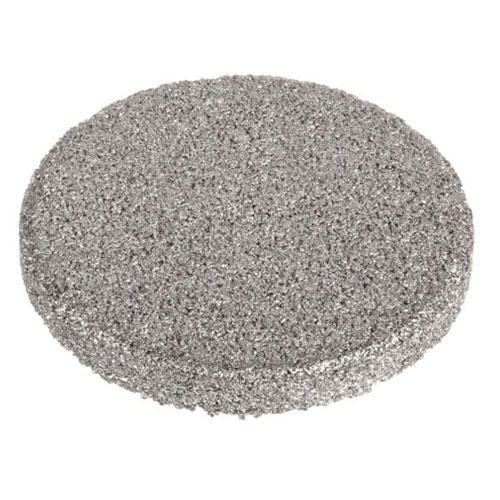
Cut sintered stainless steel
To specify Porous sintered stainless steel sheet, you will need to have the following information:
You should know the application (fluidization, filtration, gas dispersion in a liquid)
a. The material to pass through
b. The corrosion problems
c. The special operating conditions like pressure, temperature get involved
d. The contaminants being encountered
e. The shape, dimensions and tolerance needed.
f. How it should get supported
g. The required flow rate along with pressure allowed across the units of filters.
What are the Important Design Advantages of Porous Sintered Stainless Steel Parts?
The significant design advantages of Porous Sintered Stainless Steel Parts include the following:
1. Performance;
a. They have high strength, resistant to corrosion and are also durable and these are elements of every powder base metal.
b. They have controlled porosity so as to realize given properties for filtration.
c. They have controlled permeability so as to realize specifications for flow.
d. They come in a wide design range that allow particles filtration
e. They come in rates of flow from small leaks to higher volumes.
f. They realize being rigid, resistance of shock and are easy to be cleaned.
2. Their Availability;
a. They are derived from commercially available powders of metal.
b. They are usually supplied by experienced metal manufacturers globally.
c. They are manufactured in a number of sizes and shapes.
3. Cost;
a. They have well established techniques for volume production.
b. Their parts are mostly well suited to be assembled automatically.
c. It is possible to realize close dimensional control with them.
d. The design for the shape of net feature removes the requirement for main machining and also removes the loss of scrap.
- There exist a great variety of materials of porous metals; some of the major porous materials are stainless steel derived.
- There exist standards in the industry for their density, Pore Size as well as Permeability.
What is Axial Compaction in Sintered Stainless Steel Manufacturing Process?
This is a fabrication method where the powder of metal gets confined within a die at the right pressure.
That is, where the powder particles connect at various points of contact with the right strength for the part which is to be handled after being ejected.

Powder metallurgy
The “green” strength of this part is linked to the characteristics of the metal powder (size of particles, composition, purity, shape among others) as well as the pressure for forming.
The porous parts of metal are different from known structural parts.
Since, they get pressed at pressures lower than the former and they may tighten the mesh powder cuts so as to realize given requirements for porosity.
After forming has been achieved, the parts which are green end up getting heated or even sintered under temperature and pressure.
You should control these parameters below the melting point of a particular metal.
However, the conditions have to be enough for the particles to bond together and so it will increase the part strength.
Stainless steel is mostly processed using this method.
The advantages of the same include high rates of porosity, good control for permeability; and the right dimensional reproducibility.
How do you Manufacture Sintered Stainless Steel through Gravity Technique?
The gravity, also known as loose powder technique is adopted in making porous parts of metal from powders that end up diffusion-bonding easily.
Majority of parts of production are usually derived from bronze.
In the stage, there is no external pressure for shaping the part.
The right material, molded in size, gets put into the cavity of the mold, which is some void that comes in the finished part shape.
Besides, the particles of metal afterward get heated to the temperature of sintering at the point where bonding takes place.
Necks of jointing get formed at the points of contact.
While considering the process, the responsible design engineer has to visualize the final shape that is wholly enclosed by a mold.
At the same time, while leaving out the top access hole that would enable the cavity to be filled by the powder.
This is done while considering gravity sintering.
The shape which has been formed may easily be extracted from the mold after sintering and has to be visualized as well.
In a general sense, a draft of 1o on the part’s side is enough to be removed from the mold.
Even though the rule of thumb is dependent on the depth-of-fill as well as grade of material.
How does Powder Rolling and Sintering Compare to Isostatic Compaction and Sintering?
On the one hand, powder rolling is the process through which porous sheets get fabricated from alloys of stainless steel.
The material of sheet gets manufactured through direct rolling or through gravity filling of the molds as well as calendaring prior to sintering.
Known porosity is realized through selection of the right size of powder particles.
In line with the material and the density, the sheet is availed in varied thickness and along with area dimensions to one square meter or even many square feet.
The sheet may then be cut, rolled and eventually welded into various shapes.
Compaction through Isostatic on the other hand, concerns the process through which pressure gets applied uniformly to a container that is deformable.
Furthermore, it holds the metal powder which is to get compacted.
The method is mostly useful within the parts of manufacturing that have a large ratio of length and diameter.
This system mostly entails vessel of pressure.
It is made to have a liquid under some greater pressure, a container that is deformable and cores in case that tubes or even special shapes get made.
Through the containers, the Isostatic process may be used at high temperatures even though majority of parts that are porous are made at the right room temperature.
The part which is green that is derived from the cooling, gets sintered in the right manner.
The stage may be applied with the known materials.
How do you use Spray Technique to Manufacture Sintered Stainless Steel Sheet?
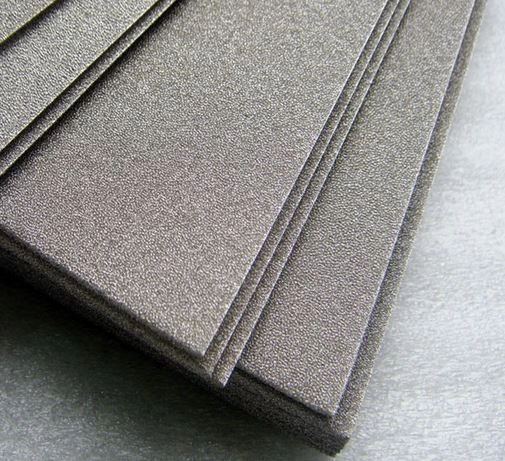
Sintered metal sheet
Through this technique, powders of metal may be the beginning of the structure.
They are porous and get created through passing metal that is molten onto some base with the control of porosity being realized.
That is, through conditions of spraying or co-spraying of some other material that may be removed later.
How does Metal Coating and Sintering compare to Metal Injection Molding and Sintering in Sintering Process?
Through metal coating, the metal powders may get mixed with some special binders.
So that they may make up a slurry which may be applied to the porous substrates or applied in forming the net shape components.
Special equipment and care is mostly needed for insuring the right binder removal as well as uniform porosity.
On the other hand, molding of metal injection and sintering concerns the materials which are porous being fabricated through MIM method.
The metal powders are mixed with great amounts of specially made binders.
This is in order to come up with a viscous material to be used in high-pressure injection.
In line with the characteristics of the material and the MIM design tool, unique components that have the density which is controlled may end up being formed.
Normally, the large shrinkage amount takes place during the removal of binder.
Consequently, special debinding as well as sintering equipment is needed for the materials to be processed by the method.
What are the Properties of Sintered Stainless Steel Sheet Type 316L?
The typical composition is: eighteen percent Cr, thirteen percent Ni, two percent Mo, one percent Si, 0.03% max C.
The parts that are porous get specified within stainless steel so that they may take special advantage of the robust resistance of the metal to corrosion and heat.
From the manufacturing viewpoint and stainless steels get applied.
From the business view point, just 316L kind is availed among the series of sizes required in making porous metal parts to conform to known kinds.
Type 316 L powder that has high nickel along with content of molybdenum is rather resistant to corrosion than the standard kind.
In addition, stainless steel porous parts that are made from Type 316L do have similar oxidation resistance.
That is, as well as degradation of strength at temperatures, which are elevated as annealed kind.
What are the Performance Characteristics of Porous Sintered Stainless Steel Sheets?
While designing porous metal parts, the designer should know the function of the metal to be realized.
They include:
- Filtration: which is the process of separation (derivation of liquid, gas or solid from a liquid or gas) that has a low pressure.
- Flow control: which is the putting of a known drop of pressure in the system of flow of the fluid.
- Distribution: concerns the ability of providing some regular flow over a wide area.
- Porosity: which is the interconnected open area inherent in the metal matrix.
What are the Mechanical Properties of Porous Sintered Stainless Steel Sheet?
- The strength and moduli are linked to the density as well as metal base properties.
- Optimum shape gets controlled.
How do you Test Quality of Sintered Stainless Steel Sheet?
Apart from known tests for physical measurements, majority of the tests for qualification for porosity that is controlled are based on application and not on the product.
The worthy test for the designer to make note of is the performance test.
Through this, the device has to work in a satisfactory way and it is mostly significant for the control of flow elements.
Where the function is dependent on both the part and the assembly method.
In an actual performance test, both the customer and the maker of the parts come up with identical stands (every one of these is calibrated from the testing of standards).
On the stands, every component gets assembled first in the housings and also tested through controlled conditions.
The pressure and flow rate get measured.
Each of the test stand gets to be checked periodically with the test parts of the standard.
Much as majority of the tests of various porous metal parts are known, there is no standard test fixture that the industry has come up with.
It is worthy for every step to get worked out in a joint way between the supplier and the client.
In majority of cases, the maker of the parts may help in designing the test fixtures.
They may also come up with calibration of the test stands each of which will be for control quality and the some other one for clients.
Are there Special Surface Finish Options for Sintered Stainless Steel Sheet?
Yes.
Finishing treatments include: sand blasting, brushing, polishing, powder coating and plating.
As you can see, there are many things you need to know about sintered stainless steel sheet.
However, if you have more questions about sintered stainless steel sheet, feel free to contact us.

